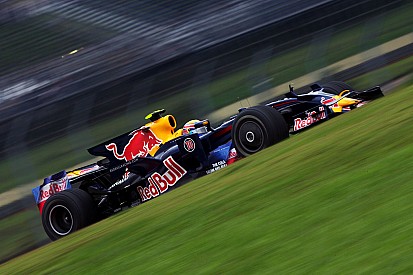
Giorgio Piola's F1 technical analysis

Red Bull's new RB16 may look at first glance to be an evolution of last year's car, but there are some intriguing differences that will have grabbed the interest of rival teams.
In particular, there appears to have been a lot of work in the nose area to try to better optimise airflow in this area of the car.
Red Bull has tried various solutions here over the years, but for 2020 it has taken things on a step further than before – even though it is hard to understand their design fully from just the one picture available.
Looking closely at the tip of the nose, the lower vented nose tip now has a duck bill atop it, which is also accompanied by another vent placed in the upper ramp section. The flow from here will be fed rearwards to other aerodynamic surfaces and devices, such as the S-duct, which like last season now has a narrower outlet on the bridge of the nose.
Read Also:
This area is flanked by two horns, similar to the ones used last season that not only empower the performance of the S-duct but also the rest of the car.
Further helping on this front are two fins situated above and behind the cockpit that appear to be diverting air around the back of the engine cover.

Red Bull Racing RB16 detail
Photo by: Red Bull Content Pool
Looking between the nose tip and front wing pylons, a snow plough device is also mounted which feeds airflow to the underside of the nose. Here, there is a newly formed caped section that flanks the nose. The cape is much more like the variation first used by Mercedes in 2017, rather than the ones seen elsewhere on the grid since.
Red Bull is testing the car for the first time at a filming day at Silverstone on Wednesday.

Max Verstappen, Red Bull Racing RB16
Photo by: Red Bull Content Pool
Related video

Previous article
Gallery: All Red Bull Racing F1 cars since 2005
Next article
F1 admits rescheduling Chinese GP will be "challenging"

About this article
| Series | Formula 1 |
| Teams | Red Bull Racing Shop Now |
| Author | Giorgio Piola |
Tech insight: What's behind new Red Bull nose
Race hub
| Session | Date | Local time Your time | Content |
| FP1 | Thu 12 Mar Fri 13 Mar | 21:00 12:00 | |
| FP2 | Fri 13 Mar Fri 13 Mar | 01:00 16:00 | |
| FP3 | Fri 13 Mar Sat 14 Mar | 23:00 14:00 | |
| QU | Sat 14 Mar Sat 14 Mar | 02:00 17:00 | |
| Race | Sun 15 Mar Sun 15 Mar | 01:10 16:10 | |































